
Sculpted jawlines have become a highly sought-after aesthetic feature. This isn’t just a passing trend – scientific studies have shown a strong link between jawline definition and facial attractiveness across genders and ages. Many patients, young and old, men and women alike, are increasingly seeking treatments to achieve a more sculpted jawline.
This guide will explore 16 effective methods to get a sculpted jawline! From helpful jaw exercises, surgical and non-surgical solutions, and lifestyle changes, we will shed light on all the ways that can help achieve an attractively sculpted jaw.
Jawline Sculpting Exercises: The Natural Way
While surgical solutions are a one-time fix, natural ways, when adopted consistently, can also give the desired results. For those who want a natural approach to jawline sculpting, there are several different methods to try. Exercises and massage techniques can help sculpt your jawline without surgery.
Read on to explore methods like facial yoga, resistance bands, and massage, along with our TMJ exercises that target specific jaw muscles for a sharper, more sculpted appearance.
#1. Mewing Technique (Our Choice)
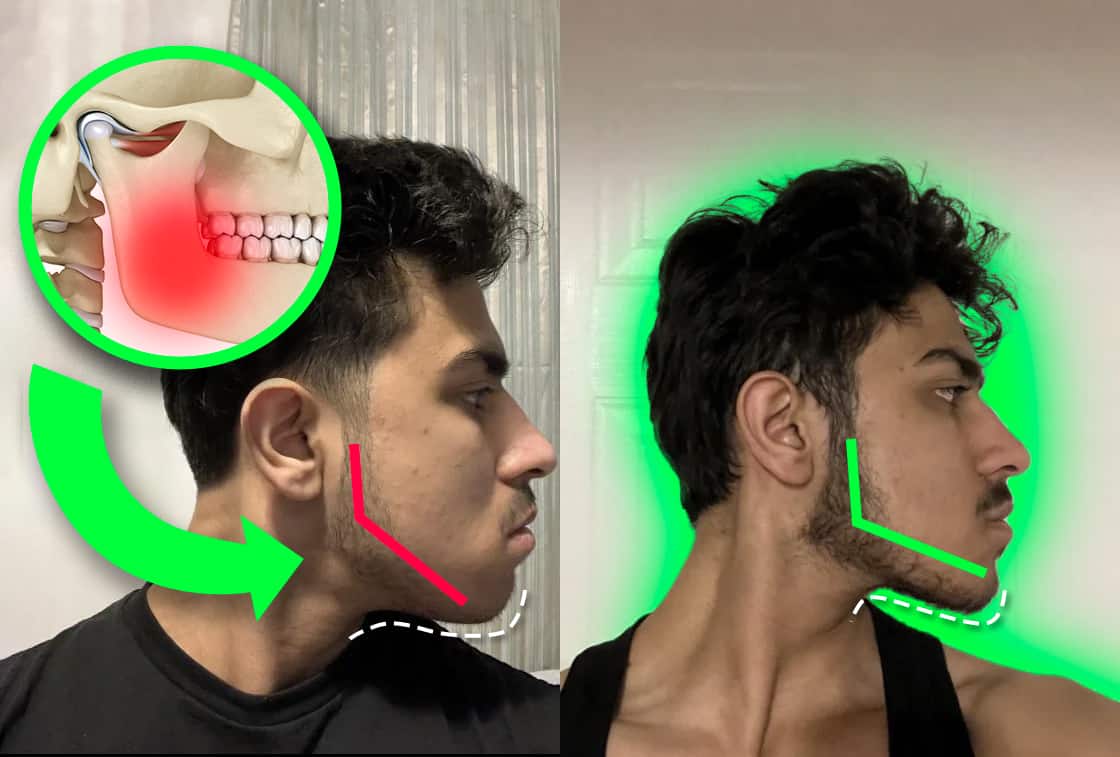
Mewing is a natural technique that focuses on proper tongue posture and oral alignment to enhance your jawline and overall facial aesthetics. Mewing rightfully claims its position as the premier solution for achieving a sculpted jawline. No costly procedures or invasive treatments are required—just a few minutes of mindful tongue placement each day can lead to noticeable results over time.
Mewing offers numerous benefits beyond appearance, including improved oral health and breathing. However, consistent practice is crucial to achieve desirable results. This is where an app like Mewing.coach helps.
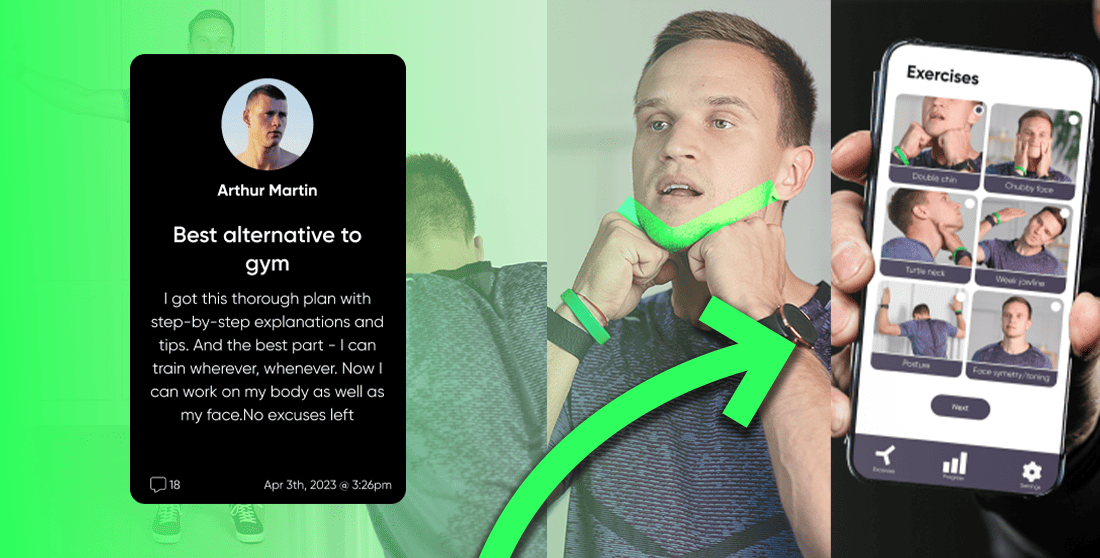
The Mewing.coach app helps stay on track with personalized reminders to practice mewing consistently. You can access the best mewing technique that targets your jawline and overall facial muscles. Beyond mewing, the app offers face-toning workouts, results tracking, before-and-after photo comparisons, and easy-to-follow video tutorials.
#2. Jawline Exercises with Resistance Bands
Resistance bands are a fantastic tool for sculpting your jawline. Here are two effective exercises:
- Lateral Jaw Stretches: Attach the resistance band to a sturdy anchor point. Place it around your head, just below your ears. Now gently stretch your jaw sideways against the band’s resistance. Aim for 15-20 repetitions on each side.
- Chin Lifts: Loop the band under your chin and hold the ends. Lift your chin upward against the band’s tension. Perform 12-15 reps for a defined jawline.
Incorporate these exercises into your routine for noticeable results.
#3. Tongue Posture Correction
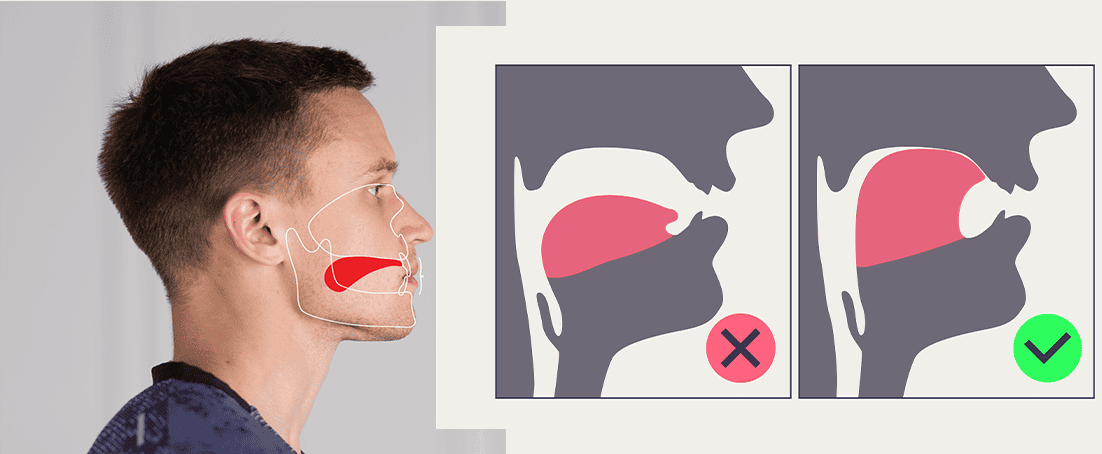
Techniques such as positioning the tongue against the palate or engaging in resistance exercises offer promising results. Flatten your tongue against the palate, ensuring the back also touches. Lips stay closed, and teeth should be gently touching.
This position might feel unnatural at first. Regularly practice it for short durations throughout the day, gradually increasing the time to see results from mewing tongue posture. The proper tongue posture not only contributes to jawline definition but also enhances overall facial aesthetics.
#4. Jawline Massage Techniques
Jawline massage offers tangible benefits. Regular self-massage can relax muscles. Kneading and tapping motions ease tension, especially along the jawline. It also boosts circulation. By stimulating lymphatic drainage, jawline massage reduces puffiness and promotes a firmer, more sculpted look.
Self-Massage Techniques:
- Firm Pressure: Use your hands to press firmly along your jawline and neck. Start at the base of your neck and move upward. Repeat on both sides.
- Vibration: Place one hand on your jawline and the other on your forehead. Gently vibrate your hand back and forth to increase circulation.
- Jade Rollers: These cooling tools glide over your skin, promoting lymphatic drainage and relaxation. Apply face oil or cream, then roll from neck to jawline.
#5. Facial Yoga for Jawline Sculpting

Facial yoga, also known as face yoga, involves specific exercises that target the muscles in your face. These exercises aim to enhance muscle tone, promote lymphatic drainage, and reduce facial tension.
You can try the lion’s pose, which is a seated yoga posture that combines physical posture and breathing exercises. It helps release tension in your chest, face, and throat muscles. The fish face exercise is also popular for toning the cheeks and lips. It helps reduce fat from the cheeks and assists in toning and lifting them.
A regular facial yoga routine may help smooth wrinkles and fine lines. It can lift the skin around the eyes, reducing under-eye bags and sagging. Toning and plumping the cheeks can enhance facial contours. Facial yoga exercises can tighten the skin around the neck and jawline. Similar to regular yoga, it decreases muscle strain, pain, and tension, promoting overall relaxation.
Dedicate a few minutes each morning to facial yoga exercises. Apply serum to clean skin. Try exercises like the Bumble Bee (plumps lips), Detox pose (chin area), and the Big O (strengthening). Repeat consistently for long-term results.
#6. Chew Gum for Jawline Definition

Chewing gum isn’t just for freshening your breath; it can also engage your jaw muscles and contribute to jawline definition. When you chew gum, you activate the muscles in your jaw, face, and neck. These muscles include the masseter (the main chewing muscle), temporalis, and other smaller facial muscles.
Chewing gum provides resistance, similar to a workout. The repetitive motion of chewing increases blood flow to the area, which can promote muscle growth and toning.
To maximize the benefits, choose the right gum. The Jawliner Facial Fitness Chewing Gum is specifically designed for this purpose. Being hard and tough, it targets over 57 facial and neck muscles. It’s 100% vegan, sugar-free, and mint-flavored, so you’ll enjoy fresh breath while you train.
It’s important to chew Intensively. Aim for a 5-10 minute intensive jaw workout every other day. Be consistent but avoid overdoing it. Place the gum between your molars and chew. Avoid excessive pressure on your front teeth to prevent damage.
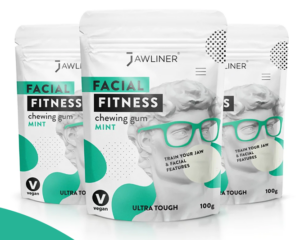
Surgical Options for Sculpted Jawline
Surgical procedures are often a go-to option for achieving a sculpted jawline. The procedures are tailored to reshape and define the jawline and also address other jawline issues, such as relieve jaw pain on one side that doesn’t subside easily. From jaw augmentation to contouring surgeries, discover how these interventions can help enhance facial aesthetics.
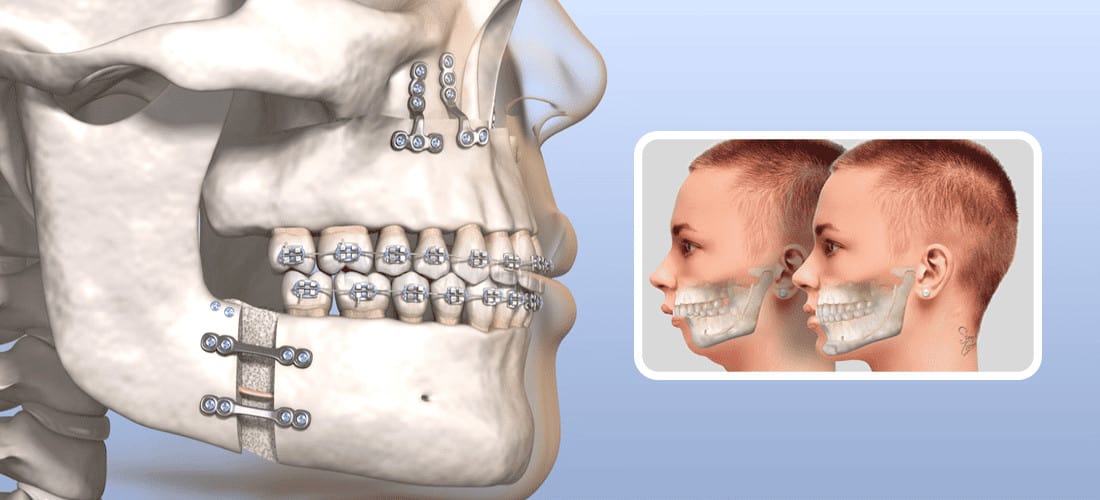
#7. Jawline Contouring Surgery
Jawline contouring surgery reshapes the jawline to create a more defined and balanced appearance. There are different techniques, such as Bone Shaving which involves removing excess bone to refine the jawline, or Chin Implants to enhance projection and definition.
Another procedure is Jawbone Repositioning to adjust the position of the jawbone.
Surgery candidates should be in good health and have realistic expectations. Standard surgical risks apply, including infection, bleeding, and anesthesia complications. Recovery time after surgical procedures varies but typically involves swelling and bruising for a few days.
#8. Chin Augmentation
A chin implant is a sculpted piece of material (usually silicone, Gore-Tex, or Medpor) inserted under the skin and molded around the chin bone. The procedure enhances the chin’s size by adding vertical height, lateral augmentation, or projection and improves jawline definition.
Chin implants come in various shapes and sizes, allowing customization to match individual anatomy and desired results, ranging from subtle improvements to dramatic changes.
Another common procedure used to improve chin definition is genioplasty, which reshapes the chin. Consult with a licensed plastic surgeon to determine the most suitable option based on your preferences and facial proportions.
A feeling of tightness in the chin area or muscles is a common experience after chin surgery. The tightness and jaw pain is further aggravated by stress. While the post-surgery tightness is temporary and usually subsides within a week, you can read more about jaw pain from stress and its impact on facial muscle tension here.
#9. Buccal Fat Removal
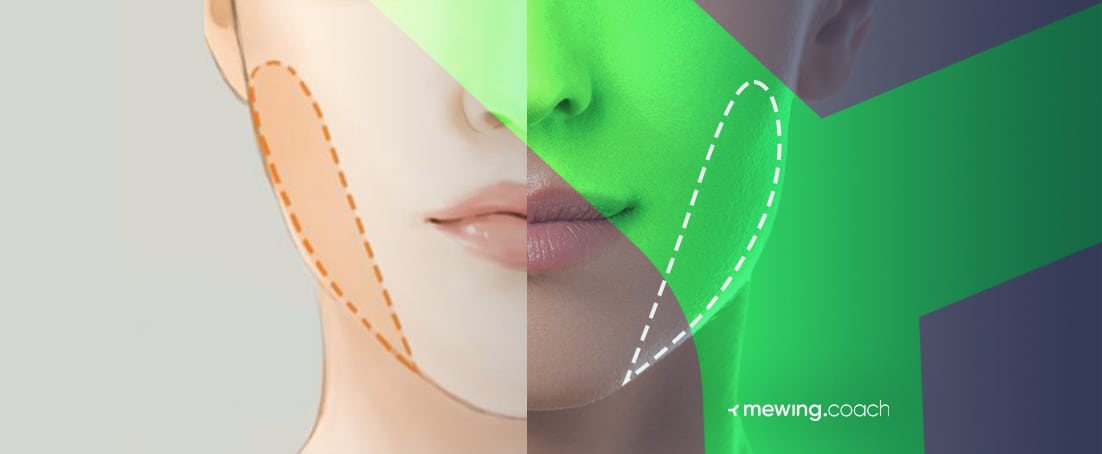
Buccal fat removal is a cosmetic surgery designed to slim the lower face and create a more defined jawline by removing the buccal fat pads in the cheeks. During the procedure, a surgeon makes small incisions inside your mouth to access these fat pads. The fat is then carefully removed, leaving minimal scarring.
This surgery is best suited for individuals with a round face shape and bothersome cheek fullness. Ideal candidates should be in good health and have realistic expectations about the outcome. While effective for losing cheek fat, it may not be suitable for everyone.
Recovery typically involves swelling and bruising that subsides within a few weeks. Potential side effects include temporary numbness and infection. Consulting a qualified surgeon is crucial to discuss candidacy, potential risks, and desired outcomes.
#10. Liposuction for Jawline
Liposuction for the jawline is a cosmetic surgery that aims to remove excess fat deposits under the chin and along the jawline for a more defined appearance.
There are various liposuction techniques used, such as tumescent liposuction (injecting lidocaine solution to numb the area) or laser-assisted liposuction (using lasers to liquefy fat for easier removal).
Planning for this surgery involves a consultation with a qualified surgeon to discuss your goals, desired outcome, and suitability for the procedure. They will assess your facial anatomy, skin elasticity, and overall health to determine if liposuction is the right option for you.
#11. Neck Lift Surgery
A neck lift, also known as platysmaplasty or cervicoplasty, is a cosmetic surgical procedure that targets visible signs of aging in the jawline and neck. It aims to remove sagging skin, tighten neck muscles (platysma muscle), and eliminate excess fat deposits.
Neck Lift Techniques
- Platysmaplasty: Focuses on tightening the platysma muscles along the front of the neck. It lifts the neck and sharpens the jawline.
- Cervicoplasty: Addresses excess skin and fat in the chin and neck area, resulting in a rejuvenated appearance.
- Liposuction: Sometimes combined with neck lift surgery to remove stubborn fat pockets.
Generally, healthy individuals with excess skin and fat beneath the chin and neck are ideal candidates for neck lift procedures. Acute recovery lasts around 2 to 4 weeks, and bruising, swelling, and discomfort gradually subside. After the initial recovery, skin adapts to the new contours, and results are usually permanent as long as weight remains stable.
Non-Surgical Jawline Sculpting Techniques
Apart from the natural ways or surgical ways, non-invasive or minimally invasive procedures are effective at enhancing the jawline. They are innovative methods that utilize injectables, radiofrequency technology, or fillers to redefine and contour the jawline, providing natural-looking results with minimal downtime. Explore these options to achieve your desired jawline appearance without undergoing surgical intervention.
#12. Dermal Fillers

Dermal fillers are injectable substances used to enhance facial features, including adding volume and definition to the jawline. Hyaluronic acid and calcium hydroxylapatite are popular filler options, each with varying degrees of dermal fillers typical lifespan and suitability.
Injection techniques involve strategically placing small amounts of filler in targeted areas. The results are typically immediate and can last anywhere from 12 to 24 months, depending on the specific filler used and individual factors.
Like any medical procedure, dermal fillers carry potential side effects such as bruising, swelling, and temporary asymmetry. Consulting a qualified dermatologist or plastic surgeon is crucial to discuss your desired outcome, suitability for fillers, and potential risks.
#13. Botox Jawline Slimming
Botox jawline slimming utilizes injections to target the masseter muscles, those responsible for chewing. By relaxing these muscles, Botox can create a slimmer, more sculpted jawline.
A healthcare professional injects small amounts of Botox into specific points on the masseter. Results are gradual, taking a few weeks to become noticeable, and can refine the jawline by softening its appearance.
This treatment is ideal for individuals with a square jawline due to enlarged masseters. It’s crucial to consult a qualified professional to determine candidacy, as Botox may not be suitable for everyone. The effects typically last 3-6 months, after which repeat injections may be desired. Potential side effects include temporary pain at the injection site, headache, and mild bruising.
#14. Kybella Injections
Kybella injections offer a non-surgical option for improving jawline definition by targeting submental fat, the fat deposit under the chin. This FDA-approved treatment uses deoxycholic acid, a substance that aids in fat breakdown.
A doctor injects Kybella in small doses into the submental area. Multiple sessions spaced weeks apart are typically needed for optimal results. You can expect a gradual reduction in submental fullness, leading to a more defined jawline.
Kybella is best suited for individuals with moderate submental fat. It’s crucial to consult a doctor to determine candidacy and discuss potential side effects like swelling, bruising, and temporary numbness.
#15. Radiofrequency Microneedling
Radiofrequency microneedling is a non-invasive treatment for tightening and contouring the jawline. It combines microneedles that create tiny controlled skin punctures with radiofrequency energy to stimulate collagen production.
This collagen boost helps tighten the skin, potentially leading to a sharper jawline definition. The treatment involves applying topical numbing cream followed by gliding the microneedling device across the jawline. Downtime is minimal, with some redness and swelling possible for a few days.
While generally safe, potential risks include temporary discomfort, pinpoint bleeding, and infection. A qualified dermatologist or aesthetician can help you decide suitability, and inform you about the expected benefits and potential side effects.
#16. Ultherapy
Ultherapy is a non-invasive ultrasound treatment used to lift and tighten the skin, potentially improving the jawline definition. During the Ultherapy procedure, focused ultrasound energy is delivered deep into the targeted skin layers. This energy stimulates the production of collagen, a protein that helps to keep skin firm and youthful.
Ultherapy is often used to treat wrinkles and sagging skin on the face and neck, and it may also be effective in improving the appearance of the jawline. While not a substitute for a facelift, Ultherapy can provide noticeable results with minimal downtime.
Treatment efficacy studies show improvement in skin tightness for up to a year after treatment. Ultherapy is generally safe for most people, but it is important to consult with a qualified healthcare professional to determine if it is right for you. They can discuss your candidacy, potential risks, and expected outcomes.
Lifestyle Changes for Jawline Enhancement
While cosmetic procedures can enhance your jawline, a healthy lifestyle can significantly improve its appearance and help to prevent jaw pain in the morning. Here are some key strategies:
Healthy Diet and Hydration
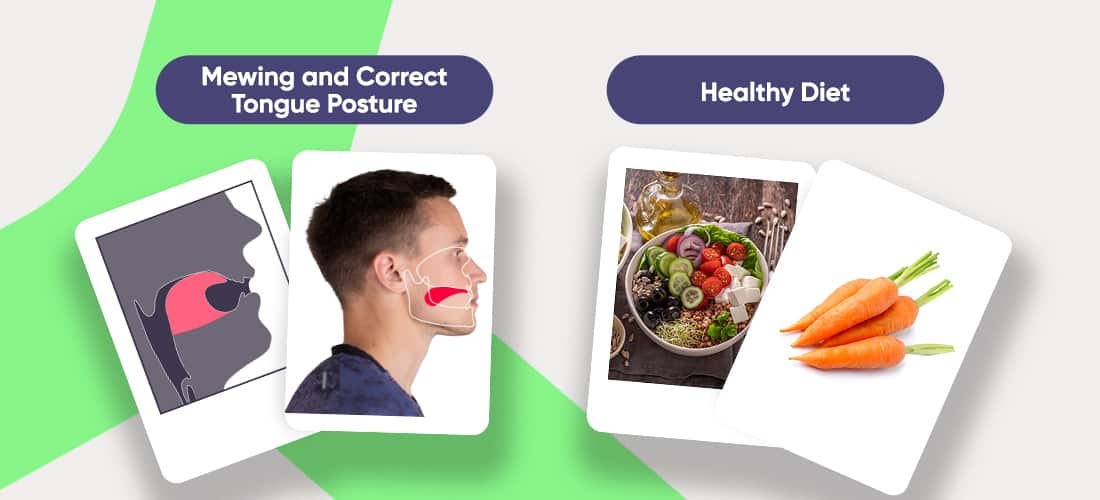
Consume a balanced diet rich in Vitamins C and E, crucial for collagen production that keeps skin firm. Don’t forget to stay hydrated! Drinking plenty of water helps maintain skin elasticity, preventing sagging along the jawline. Focus on fruits, vegetables, lean proteins, and water for optimal jawline health.
Proper Sleep Positioning
Your sleep posture significantly impacts your jawline. Sleeping on your back with proper head and neck support minimizes wrinkles, reduces tension, and promotes jawline definition.
Avoid sleeping on your stomach or with your head propped up on your hand, which can contribute to jaw pain and sagging. Remember, a good night’s sleep with your jaw relaxed can do wonders, so read about keeping your jaw relaxed during sleep.
Stress Management Techniques
Chronic stress tenses facial muscles, affecting your jawline. Practice stress-reduction techniques like deep breathing, meditation, yoga, or mindfulness to alleviate jaw tension and promote overall facial relaxation. This can also help with managing stress-related jaw clenching, a common culprit behind jaw pain.
Avoiding Excessive Chewing Gum
Believe it or not, excessive gum chewing can be detrimental. Repetitive chewing motions can lead to jaw fatigue, tension, and asymmetry along the jawline. Limit gum chewing frequency and duration to prevent jaw discomfort from chewing gum and maintain a balanced jawline.
Posture Improvement
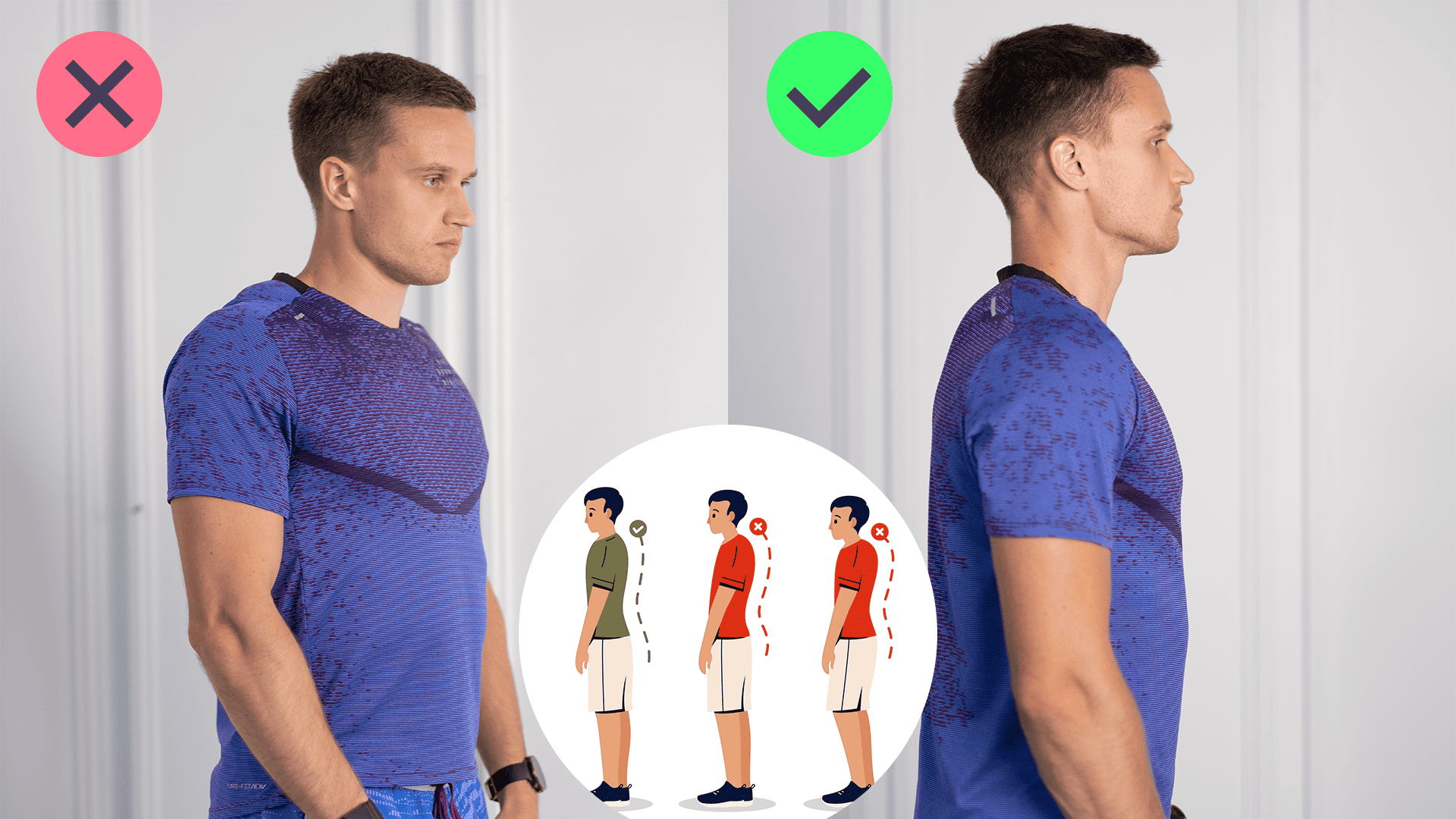
Good posture goes a long way in maintaining facial symmetry and supporting your jawline. Stand tall with your head upright, shoulders back, and chin parallel to the ground. Consider posture-improving exercises and ergonomic adjustments in your daily routine to prevent slouching and promote a defined jawline.
Remember, bad posture can cause double chin, which is why you should always be conscious of improving yours.
Your Jaw Also Changes With Age!

It’s a challenge to maintain a defined jawline as you age. As we age, our bodies naturally break down bone mass, including in the jawbone. This can lead to a less defined jawline and a more sunken appearance.
Fat tends to redistribute with age, often accumulating around the jawline, further obscuring its definition. Collagen production also slows down with age, leading to a loss of skin elasticity. This can cause the skin along the jawline to sag, contributing to a less defined look.
While these changes are natural, you can counteract them to some extent through a combination of the strategies mentioned previously and potentially exploring some of the cosmetic procedures outlined. Consulting a dermatologist or cosmetic surgeon can help you determine the best course of action for achieving your desired jawline definition.
Jawline Sculpting: A Multifaceted Approach
Achieving a sculpted jawline involves a variety of techniques, from lifestyle changes to cosmetic procedures. The best course of action depends on your individual goals, facial anatomy, and preferences.
We recommend exploring the options we’ve outlined and consulting with a qualified professional, such as a dermatologist or cosmetic surgeon. They can provide personalized advice and help you achieve a defined jawline that complements your overall facial aesthetics.




